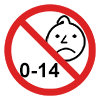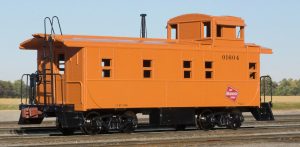Chicago Burlington & Quincy
29,95 € inkl. 19% MwSt.DE
In stock
Additional information
| Color | |
|---|---|
| DCC | |
| Manufacturer | |
| Product type | |
| Road number | |
| Series | |
| Track |
Description
The familiar caboose at the end of the train traces its origins to the early 1830s when railroads built enclosures in boxcars, or on flatcars, to house crew members. The addition of a cupola is credited to a Chicago & North Western conductor in 1863, when he suggested adding an enclosure on top of a car where he could watch the train more easily. From then on, the cupola style caboose became the standard until the 1930s and 40s when the bay window style started to become popular.
The caboose had many purposes: it sheltered the conductor, brakeman, and flagman from the elements; gave the conductor space for his paperwork; had bunks for rest and a stove for cooking. The cupola was the place to monitor the train while en route, watching for any problems that may occur between terminals. The cupola usually had seats in both directions, so no matter which way the caboose was pointed, the trainman could keep a vigilant watch.

True scale and true to life miniature model for adult collectors.
Not suitable for children under 14 years.
Related products

Chicago Burlington & Quincy
- 1277
- Cupola Caboose
- ScaleTrains H0
- Short Term / for details see FAQ

Milwaukee Road
- 1283
- Cupola Caboose
- ScaleTrains H0
- Short Term / for details see FAQ

Chicago Burlington & Quincy
- 1276
- Cupola Caboose
- ScaleTrains H0
- Short Term / for details see FAQ
Related products
-

Burlington Northern
- 1271
- Cupola Caboose
- ScaleTrains H0
- Out Of Stock / for details see FAQ
-

Chicago Burlington & Quincy
- 1276
- Cupola Caboose
- ScaleTrains H0
- Short Term / for details see FAQ
-

Milwaukee Road
- 1283
- Cupola Caboose
- ScaleTrains H0
- Short Term / for details see FAQ
